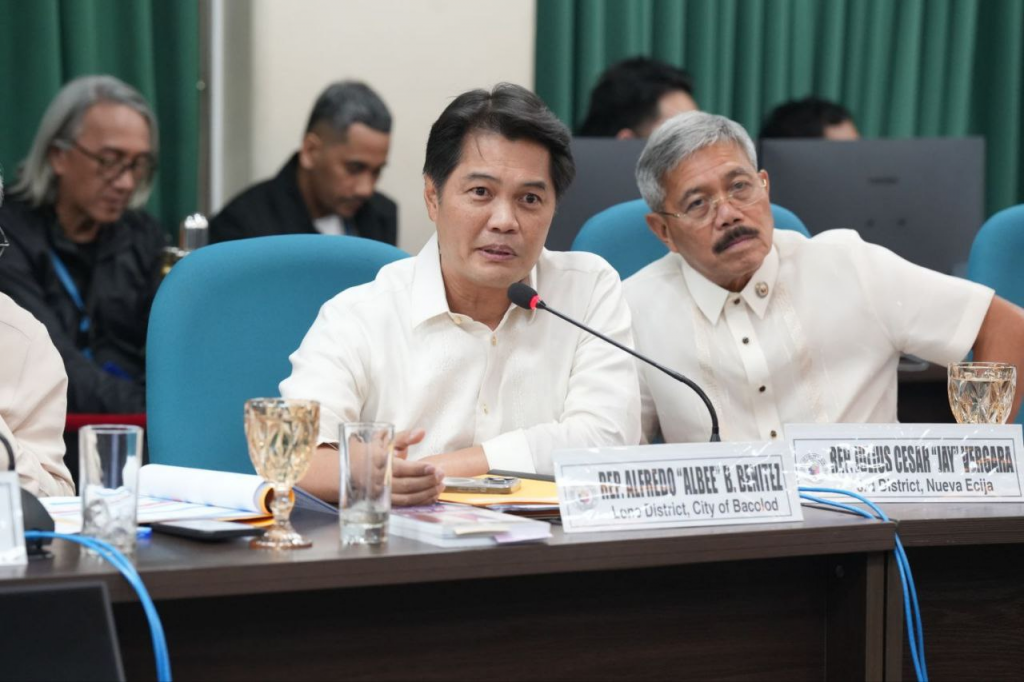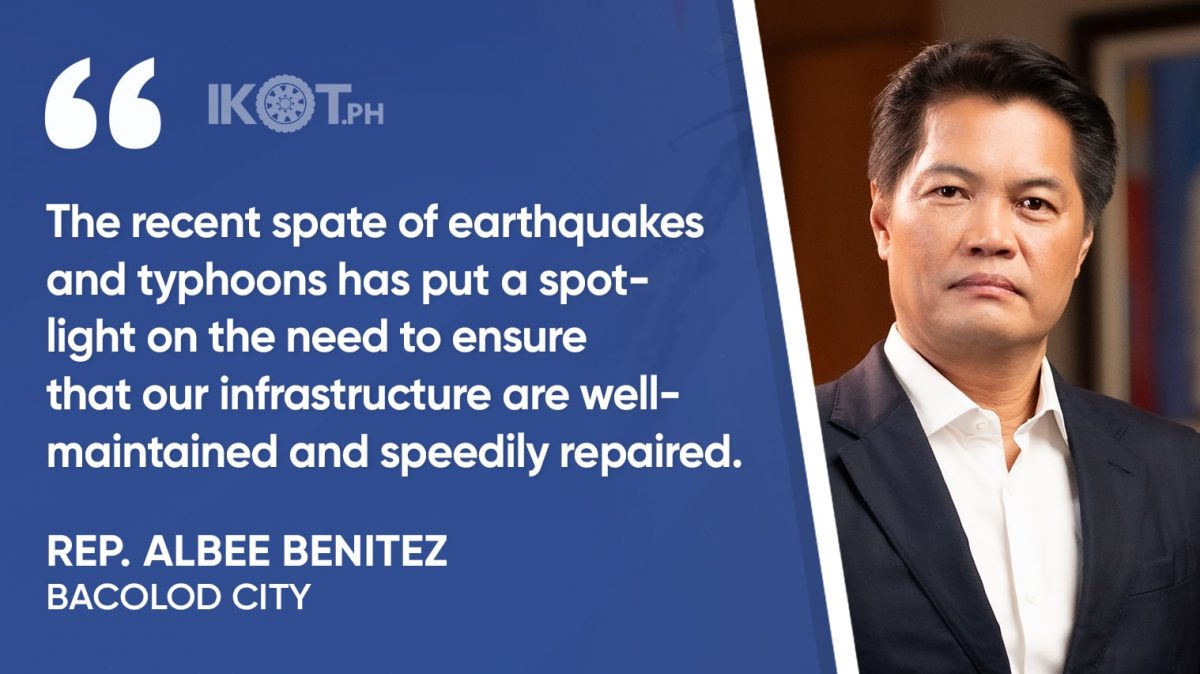Bacolod lone district Rep. Albee Benitez has filed a bill that seeks to improve the system for the repair and rehabilitation of the country’s infrastructure assets to ensure the continuity of public service delivery—a necessary measure to address the threats posed by natural calamities.
Arguing that delays in the repair and rehabilitation of damaged infrastructure such as roads, hospitals, bridges, and schools result in significant direct and indirect social and economic costs, Benitez filed House Bill No. 5202 or the Public Infrastructure Financing and Insurance bill.
Benitez stressed that the repair of public works should be prioritized considering their constant exposure due to the worsening climate.
HB No. 5202 mandates the development of a Disaster Risk and Financing Insurance Strategy that accesses state, non-state, and global sources and employs both insurance and non-insurance financing mechanisms.
“We are experiencing stronger typhoons and more frequent flooding, aside from the risks posed by earthquakes due to our being located in the Pacific Ring of Fire,” warned the lawmaker.
“The recent spate of earthquakes and typhoons has put a spotlight on the need to ensure that our infrastructure are well-maintained, made more resilient, and speedily repaired or rehabilitated.”

He added that failure to respond to this need could result in losses due to traffic and delays in the transport of food and goods, the inability to attend to the sick and injured and hold classes, and many more wide-ranging consequences.
HB No. 5202 mandates the development of a Disaster Risk and Financing Insurance Strategy that accesses state, non-state, and global sources and employs both insurance and non-insurance financing mechanisms.
A National Disaster Response for Infrastructure Fund with an initial P20-billion allocation would also be set up for repair, reconstruction, rehabilitation, or disaster mitigation of public structures such as schools, hospitals, and government offices; roads and bridges; sea- and airports; railways; power generation and transmission structures; and water resource management and supply structures.



